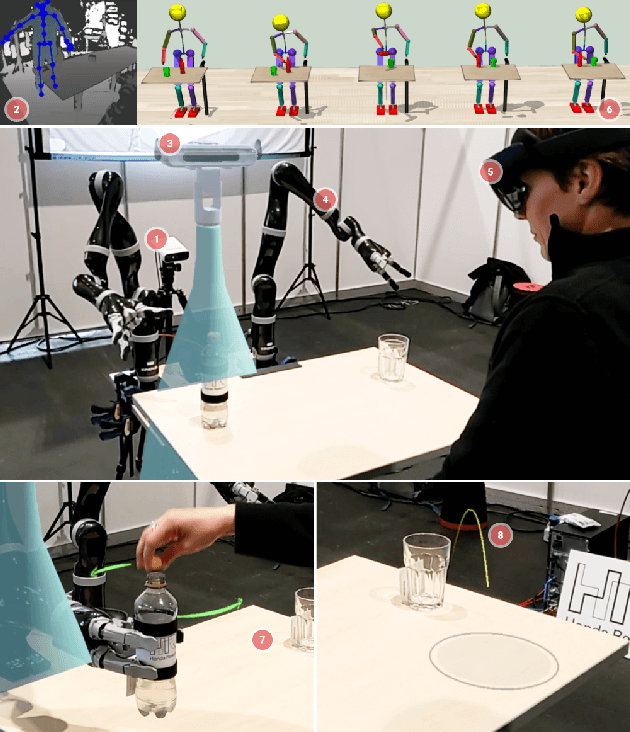Communicating Robot's Intentions while Assisting Users via Augmented Reality
Paper and Code
Aug 21, 2023
This paper explores the challenges faced by assistive robots in effectively cooperating with humans, requiring them to anticipate human behavior, predict their actions' impact, and generate understandable robot actions. The study focuses on a use-case involving a user with limited mobility needing assistance with pouring a beverage, where tasks like unscrewing a cap or reaching for objects demand coordinated support from the robot. Yet, anticipating the robot's intentions can be challenging for the user, which can hinder effective collaboration. To address this issue, we propose an innovative solution that utilizes Augmented Reality (AR) to communicate the robot's intentions and expected movements to the user, fostering a seamless and intuitive interaction.
 Add to Chrome
Add to Chrome Add to Firefox
Add to Firefox Add to Edge
Add to Edge